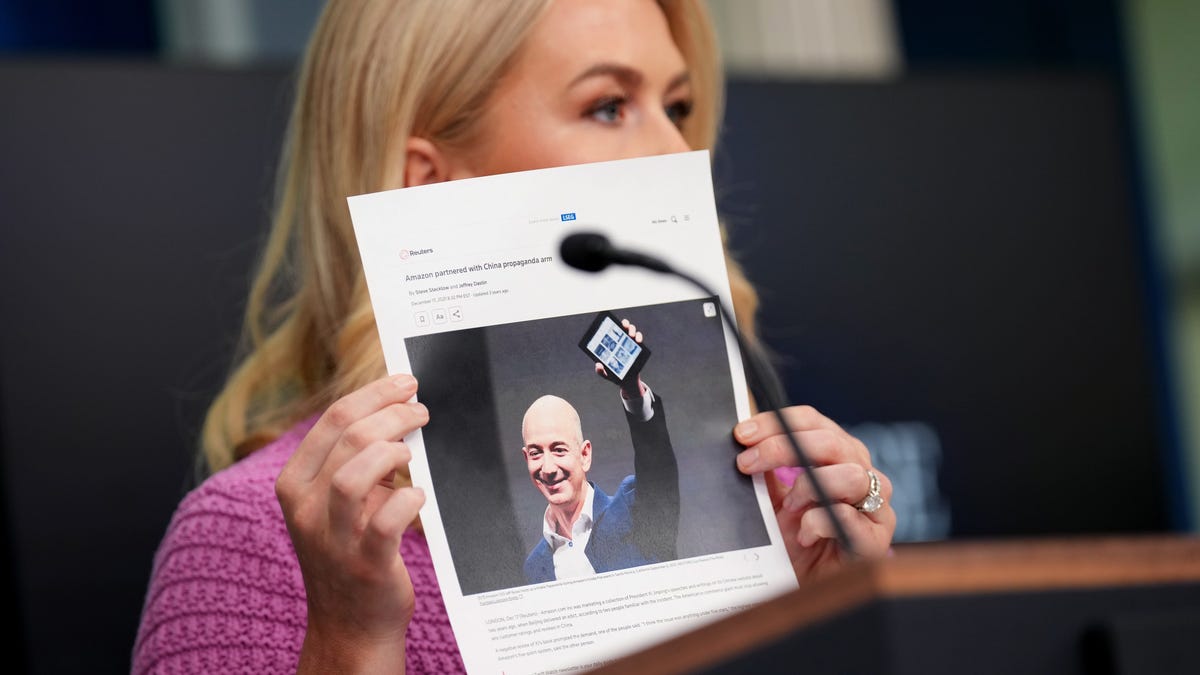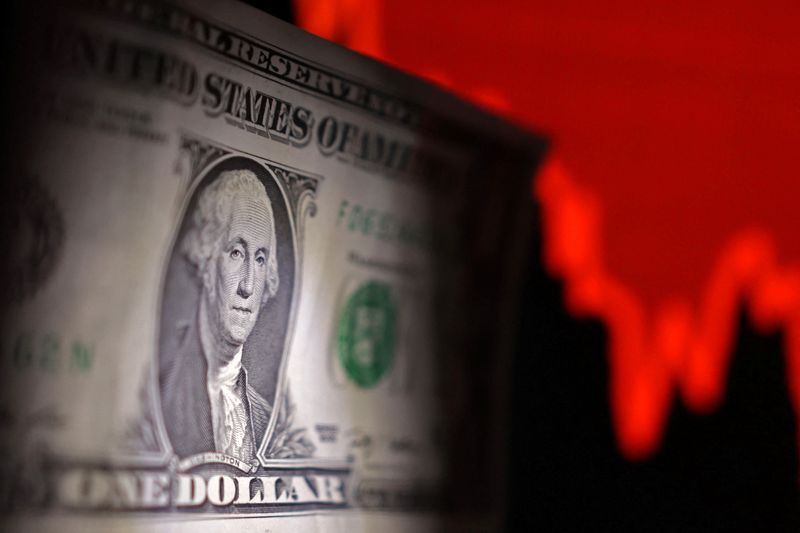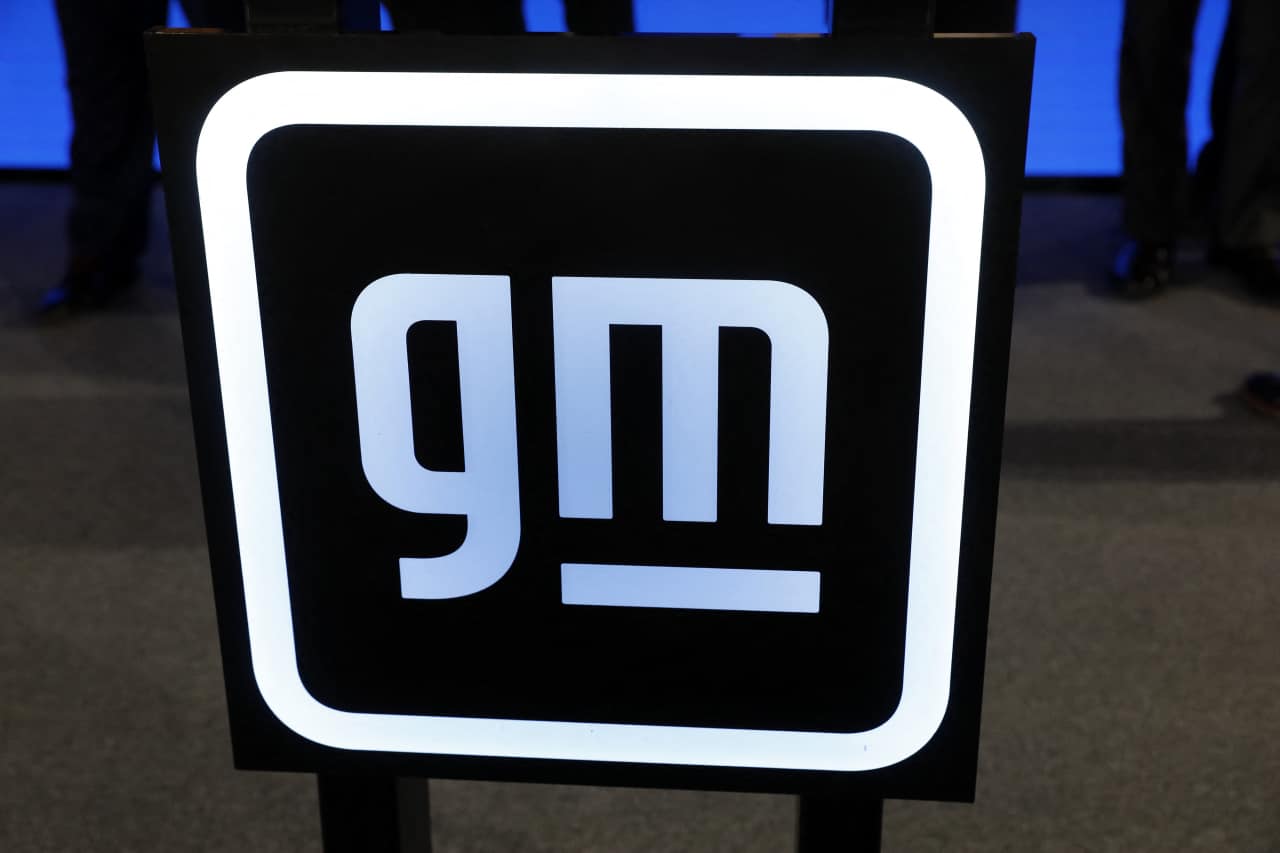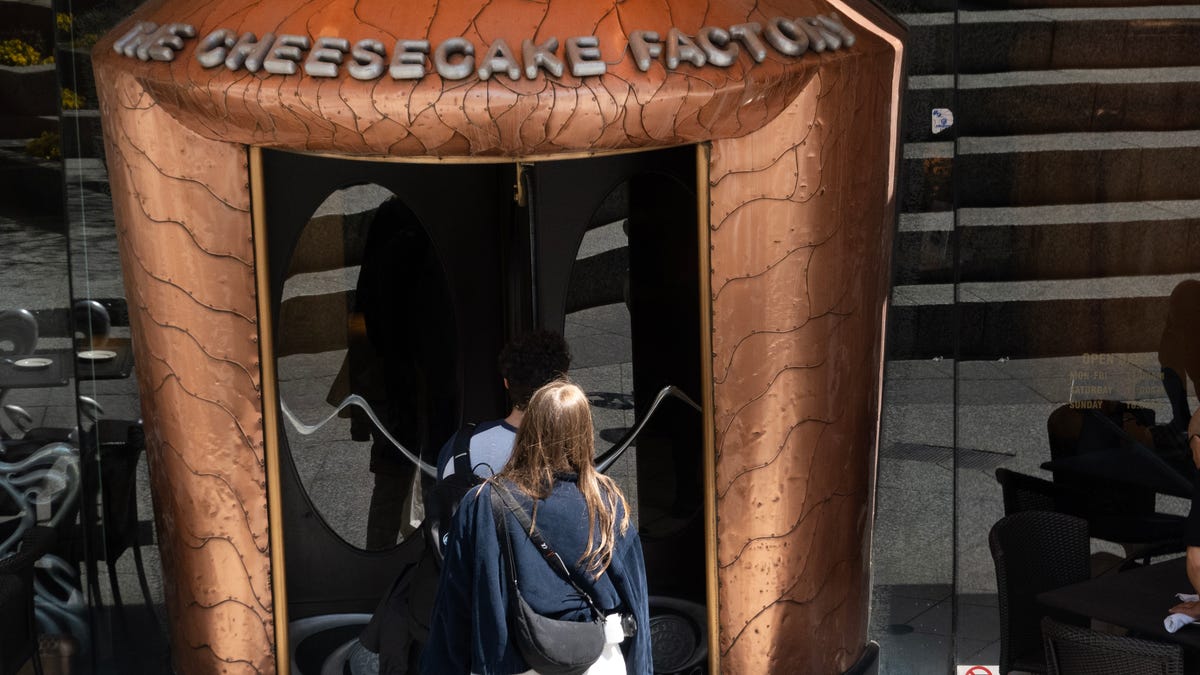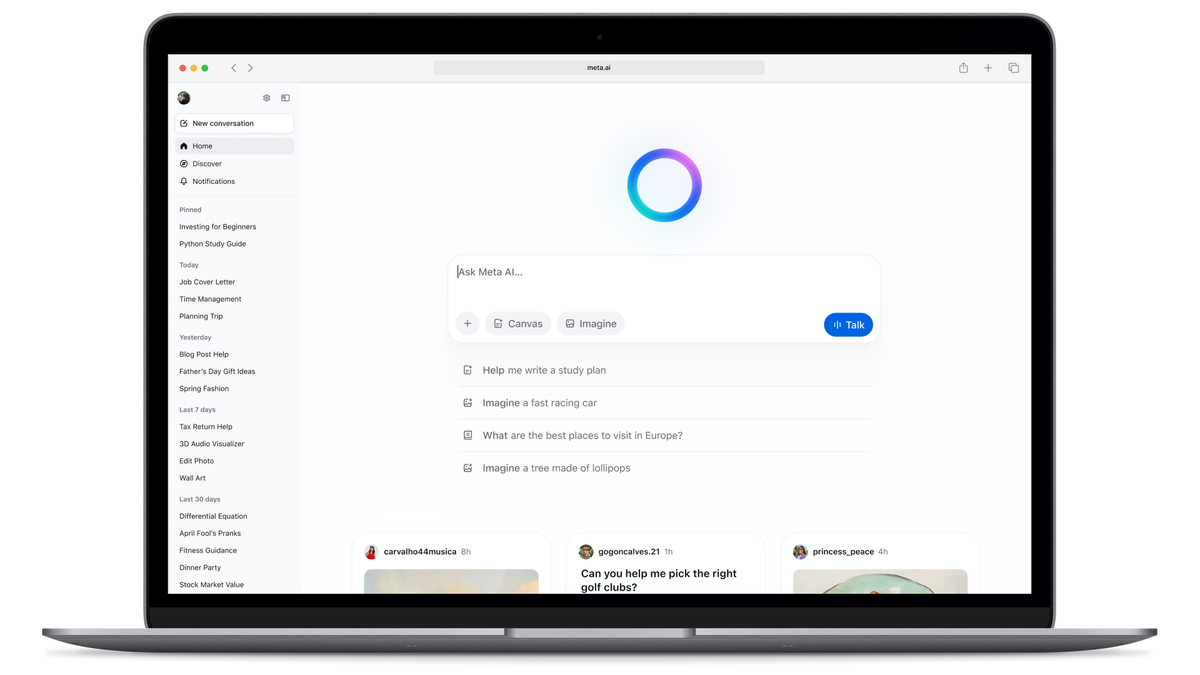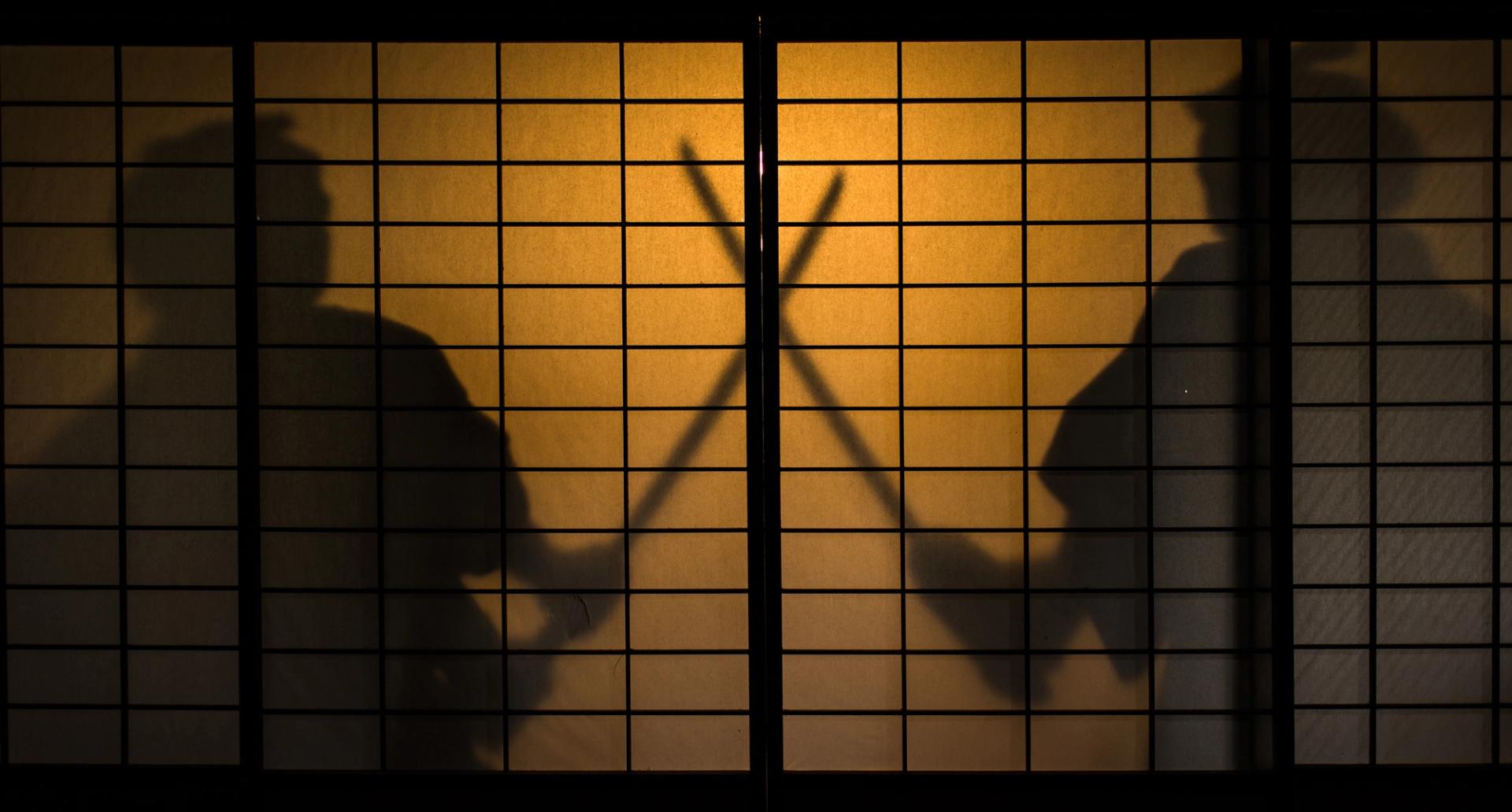Your favorite movies, reimagined as old book covers
As a kid, Matt Stevens and his neighbor used to hunker down and get set up for a game of flick football. Stevens was always the Cowboys. His neighbor was always the Steelers. Only problem was, they barely ever got to finish the game itself. “We would oftentimes run out of time, because I would spend so long making the poster for the game,” Stevens says. The North Carolina-based independent designer has long had a knack for using his creative skills to bring fictive worlds to life based on real-world IP—and, well, it tracks that if anyone was going to make an idea as random as Good Movies as Old Books work, it would be him. [Photo: Chronicle Books] MID-CENTURY MASH-UP Stevens’s new book—in which he delivers exactly what the title promises across 200-plus fake vintage book covers—is out today. And it works delightfully. As for how he found himself turning the book-to-screen paradigm on its head in the first place, around 2020, he was helping his friend, former NFL player turned entertainment producer Ryan Kalil, pitch a project. Seeking a way to give a potential film project a unique visual spin, Stevens designed an image of it as an old linen-bound book. “I’ve always loved the whole mash-up culture,” he says. “Putting something in a new context and seeing it differently has always been very interesting to me.” [Photo: Chronicle Books] After losing his father when he was young, Stevens says cinema offered a cathartic outlet, and he developed a lifelong passion for it. So after creating that first film as book for the pitch, he realized he had stumbled upon a new side project combining the things he loves—and he kept going. He began putting his initial creations on social media, and they resonated. Having initially experimented with early 1900s cover aesthetics, he discovered his sweet spot in mid-century book cover design (he particularly loves Penguin’s work during the era). “Anything where the idea is reduced down to its bare essentials is really satisfying for me,” he says. “And I think a lot of that just showed up in the mid-century stuff where they’re printing in very limited colors, and they’re paring it down to the most bare-bones details.” [Photo: Chronicle Books] His chameleonic ability to design across styles and eras is a testament to the small shops and agencies where he worked over the years, where every member of a nimble team was responsible for, well, everything. In the book, that manifests in a Saul Bass–tinged spin on Cameron Crowe’s Say Anything; a veritable Push Pin Studios take on Mad Max: Fury Road; a Terminator cover that feels almost as if it’s a lost paperback history of the Roman empire. At first, he was hesitant to touch IP that had a deep legacy of specific imagery associated with it. But he eventually embraced the thrill of it—such as in the case of, say, his unexpected take on Ghostbusters. Breaking the title typographically immediately sets it on new ground, and the ominous silhouetted figures set against the limerick green background offer a fresh look at a beloved, well-worn property. “It was exciting to me to go, Okay, everybody knows that there are a million iconic images of this thing. How do I come up with something that’s different?” [Photo: Chronicle Books] KICK-STARTING A COLLECTION Designing a fake book for a very real movie is not unlike designing an actual cover for a very real book. “I love the medium of book design,” Stevens says. “To me, it’s one of the purest and most satisfying challenges in the way that a poster is.” Sometimes he starts with the idea he wants to explore, and sometimes he starts with a style that he wants to play within. Either way, when he sets out to design a fake cover for a flick, he rewatches it—a process that can reveal the film to him in all-new ways. [Photo: Chronicle Books] “It’s just a different way of watching [movies]. You’re looking at themes and iconic images,” he says. “I think it just deepened my love for some of them.” As for his subjects, he says he’s not out to create a “Best Of” cinematic list. Rather, he goes with the films he loves, the films that inspired him, or films that seem fertile ground for a fresh spin. He says the latter is often what resonates with viewers the most, such as his cover for Mad Max: Fury Road. After he reached 100 “books,” in 2020 he launched a Kickstarter campaign to produce a book of them, which brought in $57,000, nearly doubling its initial goal. When he designed 100 more, he Kickstarted a second volume. A literary agent, meanwhile, had been gifted one of Stevens’s prints, and hung it on her wall. Someone in her office asked if she liked Stevens’s book—but the agent had no idea one even existed. So she reached out to him, and that’s why Chronicle is now publishing a new volume collecting the best of his first two, with an additional 60 new covers (and an accompanying box set of 100 postcards). [Photo: Chroni
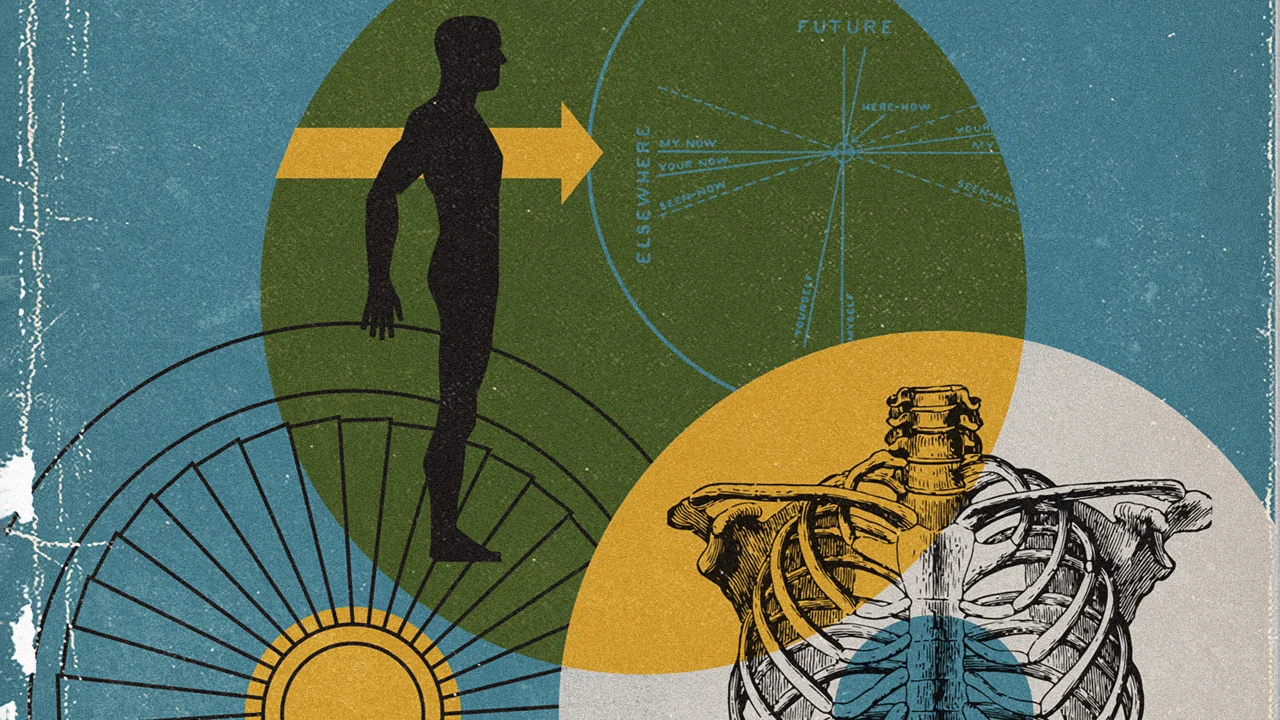
As a kid, Matt Stevens and his neighbor used to hunker down and get set up for a game of flick football. Stevens was always the Cowboys. His neighbor was always the Steelers. Only problem was, they barely ever got to finish the game itself.
“We would oftentimes run out of time, because I would spend so long making the poster for the game,” Stevens says.
The North Carolina-based independent designer has long had a knack for using his creative skills to bring fictive worlds to life based on real-world IP—and, well, it tracks that if anyone was going to make an idea as random as Good Movies as Old Books work, it would be him.

MID-CENTURY MASH-UP
Stevens’s new book—in which he delivers exactly what the title promises across 200-plus fake vintage book covers—is out today. And it works delightfully.
As for how he found himself turning the book-to-screen paradigm on its head in the first place, around 2020, he was helping his friend, former NFL player turned entertainment producer Ryan Kalil, pitch a project. Seeking a way to give a potential film project a unique visual spin, Stevens designed an image of it as an old linen-bound book.
“I’ve always loved the whole mash-up culture,” he says. “Putting something in a new context and seeing it differently has always been very interesting to me.”
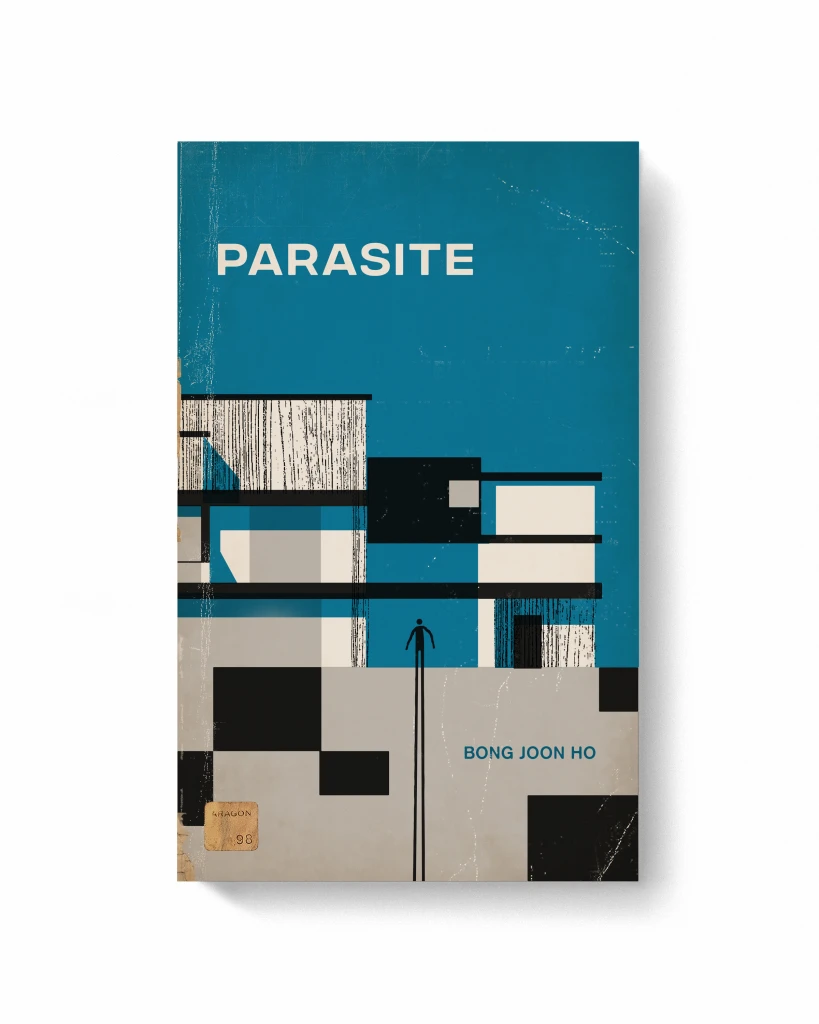
After losing his father when he was young, Stevens says cinema offered a cathartic outlet, and he developed a lifelong passion for it. So after creating that first film as book for the pitch, he realized he had stumbled upon a new side project combining the things he loves—and he kept going.
He began putting his initial creations on social media, and they resonated. Having initially experimented with early 1900s cover aesthetics, he discovered his sweet spot in mid-century book cover design (he particularly loves Penguin’s work during the era).
“Anything where the idea is reduced down to its bare essentials is really satisfying for me,” he says. “And I think a lot of that just showed up in the mid-century stuff where they’re printing in very limited colors, and they’re paring it down to the most bare-bones details.”
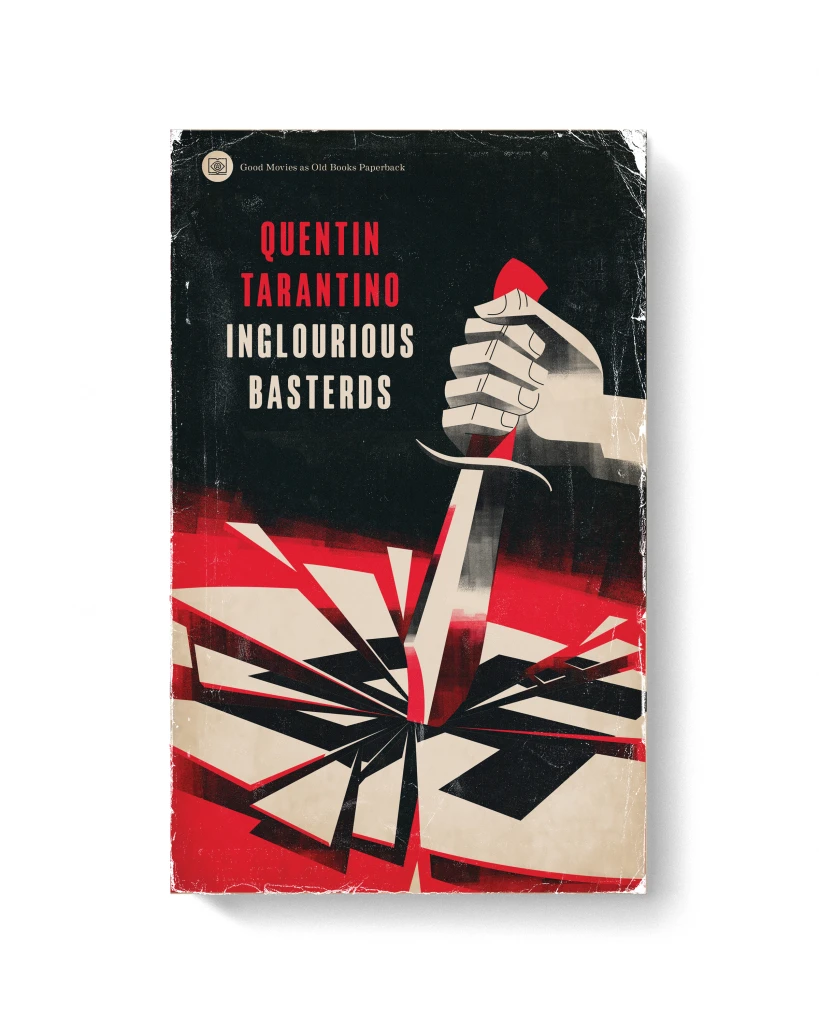
His chameleonic ability to design across styles and eras is a testament to the small shops and agencies where he worked over the years, where every member of a nimble team was responsible for, well, everything.
In the book, that manifests in a Saul Bass–tinged spin on Cameron Crowe’s Say Anything; a veritable Push Pin Studios take on Mad Max: Fury Road; a Terminator cover that feels almost as if it’s a lost paperback history of the Roman empire.
At first, he was hesitant to touch IP that had a deep legacy of specific imagery associated with it. But he eventually embraced the thrill of it—such as in the case of, say, his unexpected take on Ghostbusters. Breaking the title typographically immediately sets it on new ground, and the ominous silhouetted figures set against the limerick green background offer a fresh look at a beloved, well-worn property.
“It was exciting to me to go, Okay, everybody knows that there are a million iconic images of this thing. How do I come up with something that’s different?”
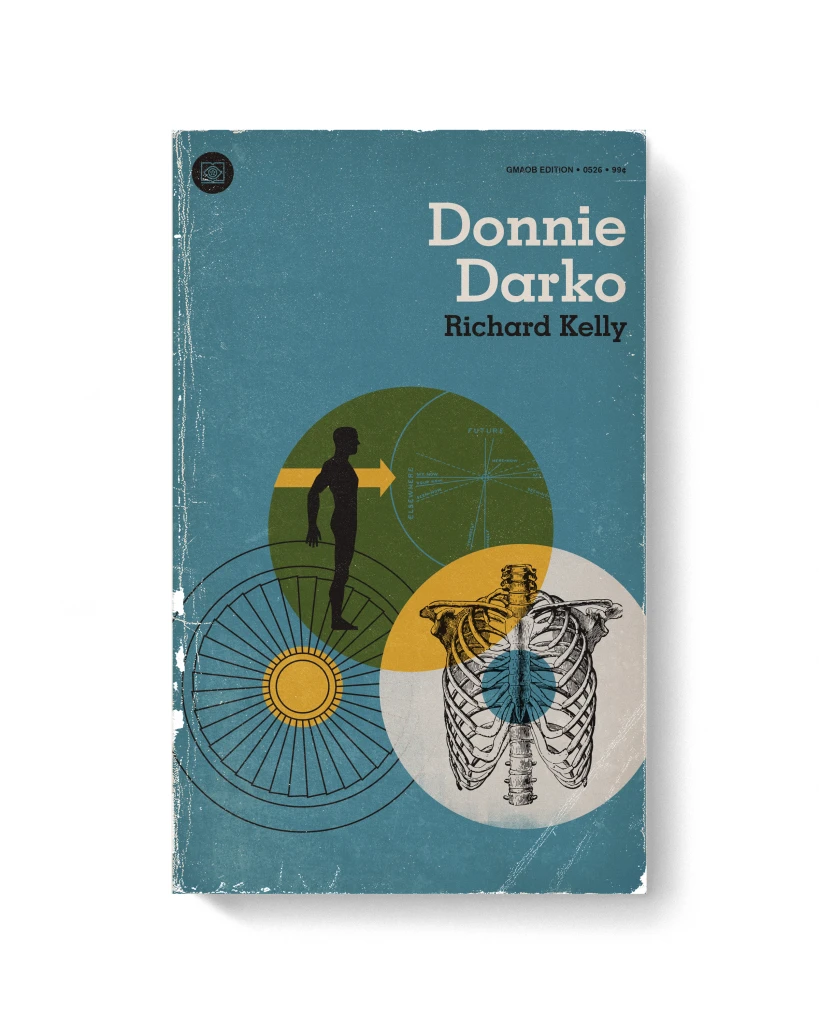
KICK-STARTING A COLLECTION
Designing a fake book for a very real movie is not unlike designing an actual cover for a very real book.
“I love the medium of book design,” Stevens says. “To me, it’s one of the purest and most satisfying challenges in the way that a poster is.”
Sometimes he starts with the idea he wants to explore, and sometimes he starts with a style that he wants to play within. Either way, when he sets out to design a fake cover for a flick, he rewatches it—a process that can reveal the film to him in all-new ways.
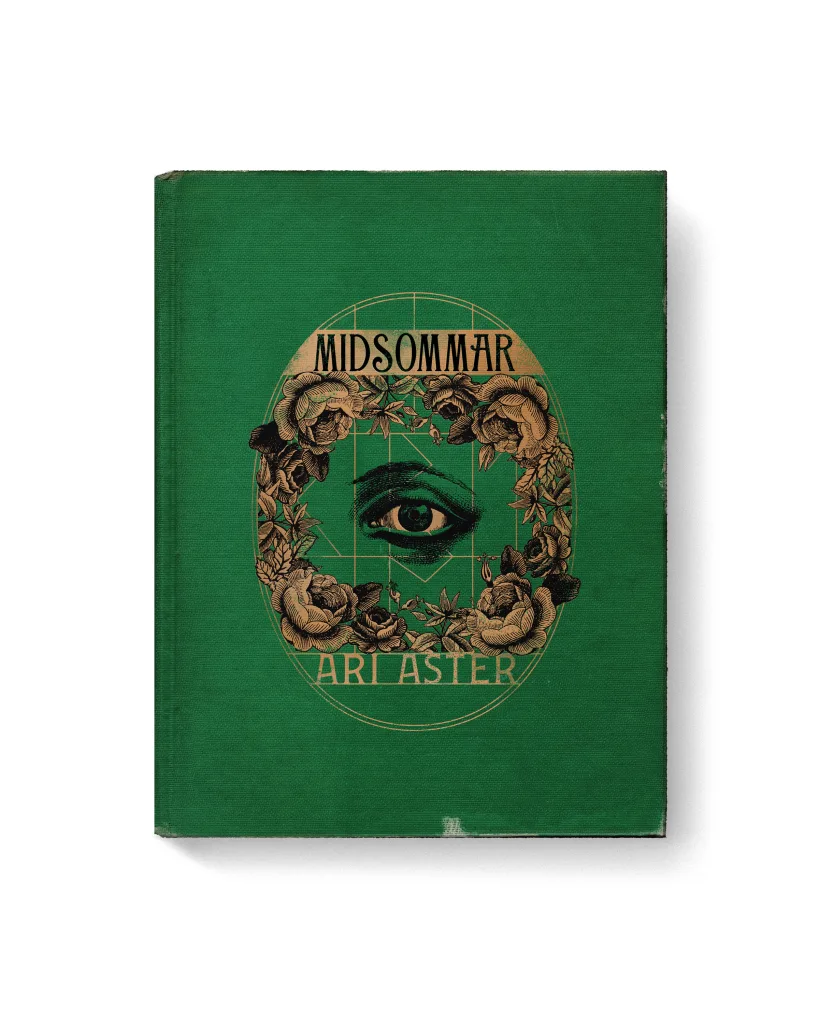
“It’s just a different way of watching [movies]. You’re looking at themes and iconic images,” he says. “I think it just deepened my love for some of them.”
As for his subjects, he says he’s not out to create a “Best Of” cinematic list. Rather, he goes with the films he loves, the films that inspired him, or films that seem fertile ground for a fresh spin. He says the latter is often what resonates with viewers the most, such as his cover for Mad Max: Fury Road.
After he reached 100 “books,” in 2020 he launched a Kickstarter campaign to produce a book of them, which brought in $57,000, nearly doubling its initial goal. When he designed 100 more, he Kickstarted a second volume. A literary agent, meanwhile, had been gifted one of Stevens’s prints, and hung it on her wall. Someone in her office asked if she liked Stevens’s book—but the agent had no idea one even existed. So she reached out to him, and that’s why Chronicle is now publishing a new volume collecting the best of his first two, with an additional 60 new covers (and an accompanying box set of 100 postcards).
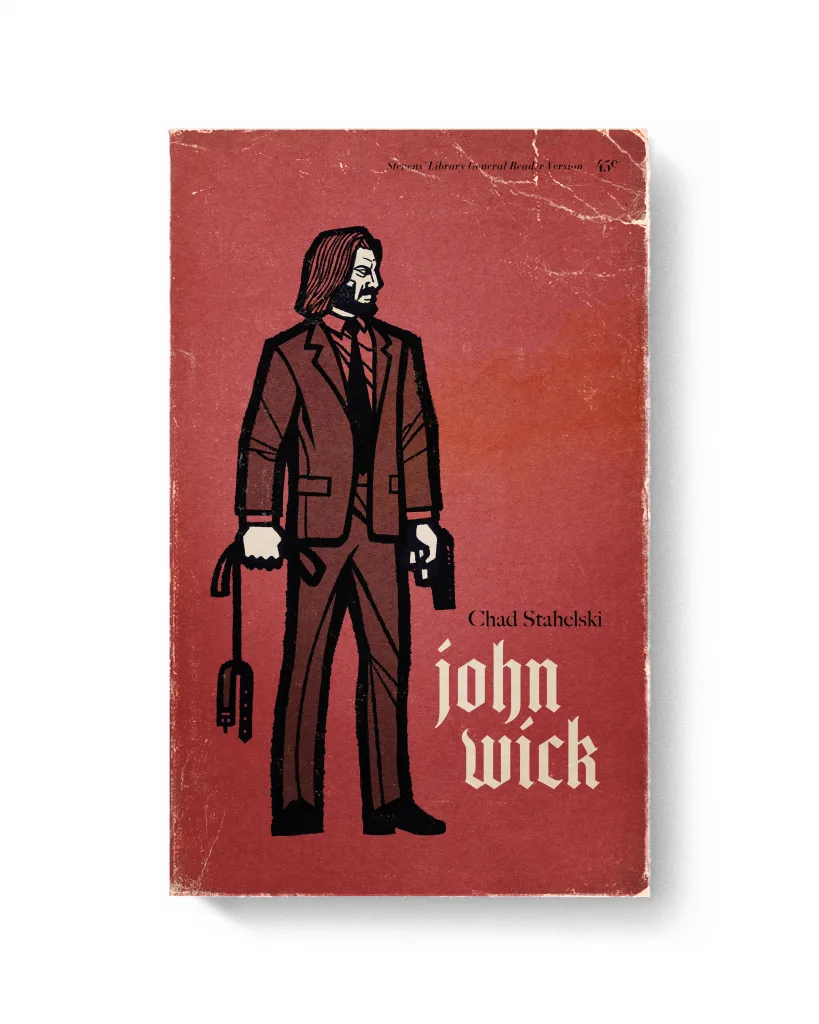
The ironic thing? Designing fake book covers has led Stevens to gigs designing real ones. For the moment, he has taken a break from his fictive jackets—but when someone lands on such a curious mix of passion and side-project success, can they ever really give it up?
“I just saw Sinners this weekend, and it’s like, Oh, I’d love to work on that,” he says with a laugh. “So who knows?”





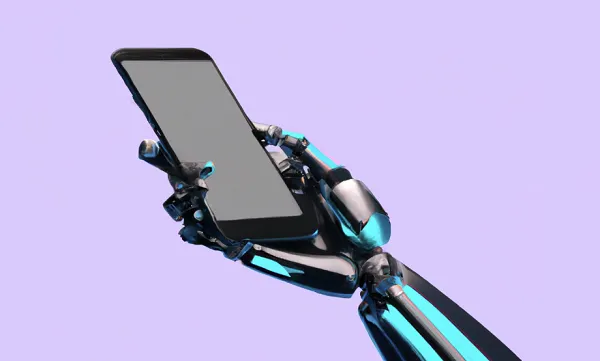
![Experts Don’t Believe AI Tools Will Lead to Mass Job Losses [Infographic]](https://imgproxy.divecdn.com/gcXE1_Da13Oz-JAszjUwb6v5UqMp2MFMjDAIXPbLad0/g:ce/rs:fit:770:435/Z3M6Ly9kaXZlc2l0ZS1zdG9yYWdlL2RpdmVpbWFnZS9haV9qb2JfbG9zc2VzLnBuZw==.webp)















